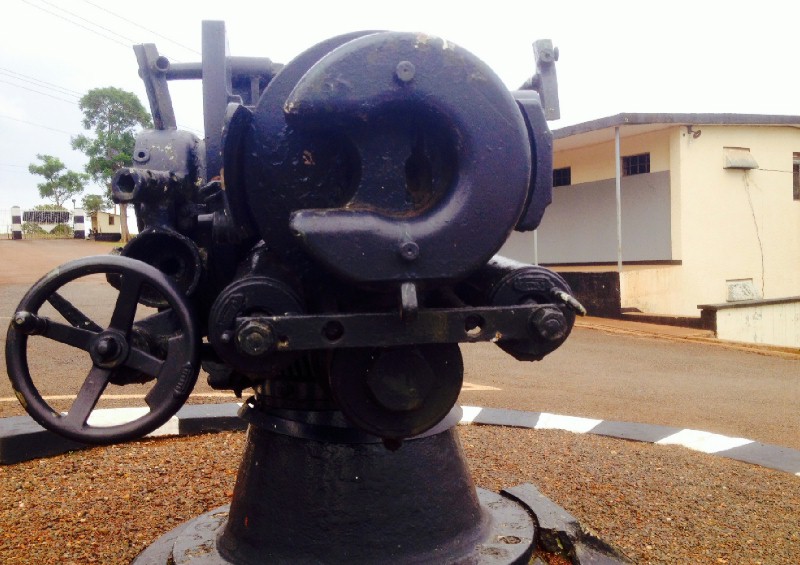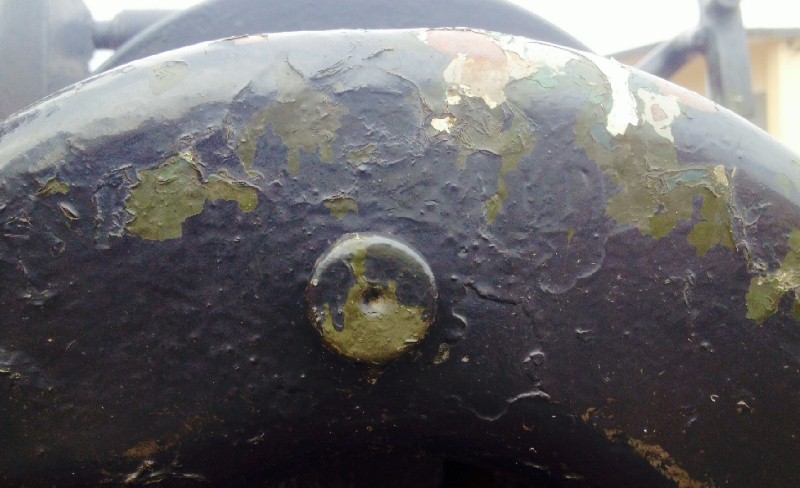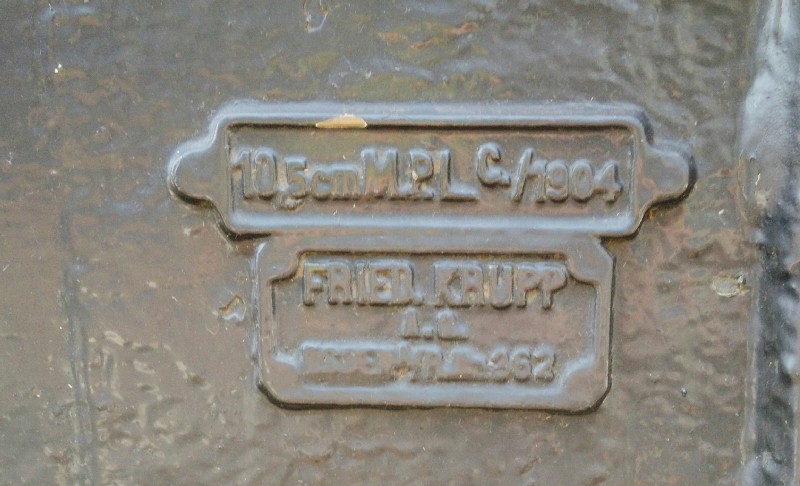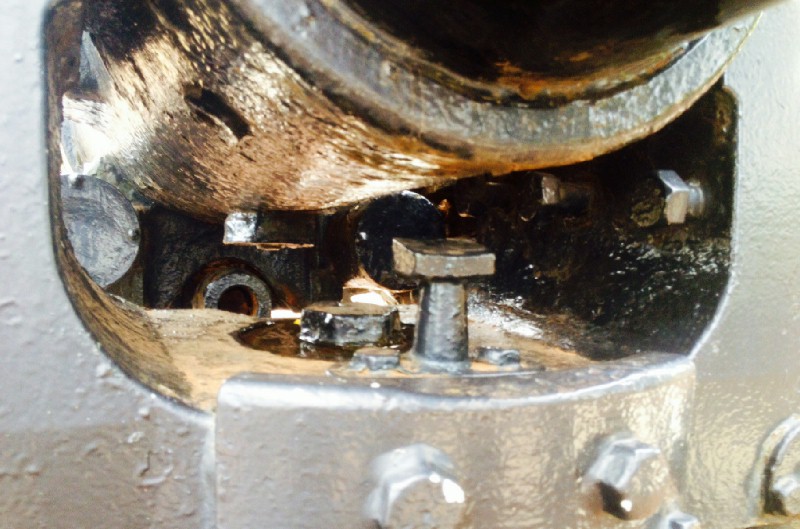|
Photo Gallery of the SMS
Königsberg Gun at Jinja
Photos © JR 2014

10.5cm SMS Königsberg Gun, Jinja 2014
This photograph shows the length of the breech and barrel
seen from the right side. It has been repainted black since the
1990s. Note the recoil cylinder under the breech. The breech
block is back in place but without its opening handle. It was
removed by the Germans and is not there in the period photo of
the newly captured gun. It must have been retrieved after the
Germans disposed of it. This makes it the only Königsberg gun
displayed after the war with its breech block. The absence of a
barrel flange can also clearly be seen here.

Breech
This photograph shows
a view of the breech from the gunners position. On the left is
the traverse wheel. The breech and its block can clearly be
seen. Below the barrel are the two recoil cylinders. Like the
breech block they appear to have been replaced after the gun was
captured with them removed. The plaque bearing a description of
the gun's capture can be seen on the right at the bottom of the
pivot stand.

Close up of the Breech
This close up photograph shows the top of the breech of the gun.
The serial number should be visible here but cannot be read
because of the several layers of paint over the gun. The current
black paint is already peeling in places revealing the previous
green paint seen in photographs from the 1990s. Beneath the
green a pale grey can be seen in places. Black and white
photographs of the gun on display in Kampala show it a light
shade which may be this grey. It may or may not be the
Königsberg's original paint.

Recoil Cylinder
This photograph shows a close up view of the left recoil
cylinder. The gun's serial number, 362 can just be made out
under layers of paint.

Maker's Plaque on the Gun
Stand
This close up photograph shows the factory plaque on the left
side of the gun stand. It is marked "10,5cm M.P.L. c./1904"
showing the gun's calibre and the stand type "Mittel Pivot
Lafette", model of 1904. The section below has the maker's mark
"Fried. Krupp A.G." and below that an unreadable in ending with
the gun's serial number, 362.
.jpg)
Pivot Stand
This close up photograph shows the naval pivot stand.
The teeth for traverse rotation of the gun can be seen. Note the
stand's aiming ring with degrees of rotation marked out on it.
There appears to be small arms damage to the ring in the form a
hole straight through it. There are several bullet marks on the
right side of the gun. These may have been caused during the
capture of the gun during the First World War. It is also
possible that they were caused by fighting in the area in the
1980s between the Ugandan army and the Holy Spirit Movement
during the Lord's Resistance Army Insurgency. The bullet marks
may also have been caused at anytime since the First World War
by people using the gun as target practice.
.jpg)
Muzzle
This close up
photograph shows the muzzle of the gun, note the rifling grooves
inside the barrel. Also note the small arms damage.
.jpg)
More Bullet Marks on
the Barrel
This close up photograph shows more damage to the barrel
caused by small arms fire.

Underside of the Barrel
This close up photograph shows the underside of the
barrel fitting into the gun bucket of the pivot stand.
f.jpg)
Plaque Describing the Gun's
Capture
The plaque on the gun accurately records its history and capture-
"This 4.1" Gun which had
been removed from the German cruiser "Konigsberg" was
seized at Mwanza on 14th July 1916 when that town was
captured by a force consisting of the 4th Battalion KAR
and the Uganda Police Service Battalion, the Uganda
Rifles and local details" |